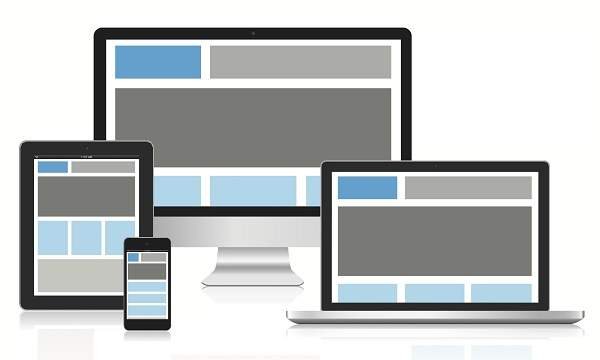CSS Responsiveness
CSS Responsiveness
CSS3 Responsive Web Design
Responsive web design provides the best experience across different devices (such as desktop computers, mobile devices, and tablets), making it easy to read and navigate with minimal resizing.
Responsive Structure
The following diagram shows the responsive structure of a web page.

Flexible Grid Demonstration
<html>
<head>
<style>
body {
font: 600 14px/24px "Open Sans",
"HelveticaNeue-Light",
"Helvetica Neue Light", "Helvetica Neue",
Helvetica, Arial,
"Lucida Grande",
Sans-Serif;
}
h1 {
color: #9799a7;
font-size: 14px;
font-weight: bold;
margin-bottom: 6px;
}
.container:before, .container:after {
content: "";
display: table;
}
.container:after {
clear: both;
}
.container {
background: #eaeaed;
margin-bottom: 24px;
*zoom: 1;
}
.container-75 {
width: 75%;
}
.container-50 {
margin-bottom: 0;
width: 50%;
}
.container, section, aside {
border-radius: 6px;
}
section, aside {
background: #2db34a;
color: #fff;
margin: 1.858736059%;
padding: 20px 0;
text-align: center;
}
section {
float: left;
width: 63.197026%;
}
aside {
float: right;
width: 29.3680297%;
}
</style>
</head>
<body>
<h1>100% Wide Container</h1>
<div class = "container">
<section>Section</section>
Aside</aside>
</div> <h1>75% Wide Container</h1>
<div class = "container container-75">
<section>Section</section>
Aside</aside>
</div>
<h1>50% Wide Container</h1>
<div class = "container container-50">
<section>Section</section>
Aside</aside>
</div>
</body>
</html>
The following results will be generated −

Media Queries
Media queries are used to apply different style rules for different device sizes (such as mobile phones, desktops, etc.).
<html>
<head>
<style>
body {
background-color: lightpink;
}
@media screen and (max-width: 420px) {
body {
background-color: lightblue;
}
}
</style>
</head>
<body>
<p>
If screen size is less than 420px, then it will display lightblue
color, or else it will display a light pink color.
</p>
</body>
</html>
It will produce the following result −

Bootstrap Responsive Web Design
Bootstrap is the most popular web design framework based on HTML, CSS, and JavaScript. It helps you design responsive web pages that work on all devices.
<html>
<head>
<meta charset = "utf-8">
<meta name = "viewport" content = "width=device-width, initial-scale = 1">
<link rel = "stylesheet"
href = "http://maxcdn.bootstrapcdn.com/bootstrap/3.2.0/css/bootstrap.min.css">
<style>
body {
color:green;
}
</style>
</head>
<body>
<div class = "container">
<div class = "jumbotron">
<h1>Geek docs</h1>
<p>
Geek docs originated from the idea that there exists a class
of readers who respond better to online content and prefer to learn
new skills at their own pace from the comforts of their drawing rooms.
</p>
</div>
<div class = "row">
<div class = "col-md-4">
<h2>Android</h2>
<p>
Android is an open source and Linux-based operating system for mobile
devices such as smartphones and tablet computers. Android was developed
by the Open Handset Alliance, led by Google, and other companies. </p>
</div>
<div class = "col-md-4">
<h2>CSS</h2>
<p>
Cascading Style Sheets, fondly referred to as CSS, is a simple design
language intended to simplify the process of making web pages presentable.
</p>
</div>
<div class = "col-md-4">
<h2>Java</h2>
<p>
Java is a high-level programming language originally developed by Sun
Microsystems and released in 1995. Java runs on a variety of platforms,
such as Windows, Mac OS, and the various versions of UNIX. This tutorial
gives a complete understanding of Java.
</p>
</div>
</div>
</body>
</html>
It will produce the following results –
